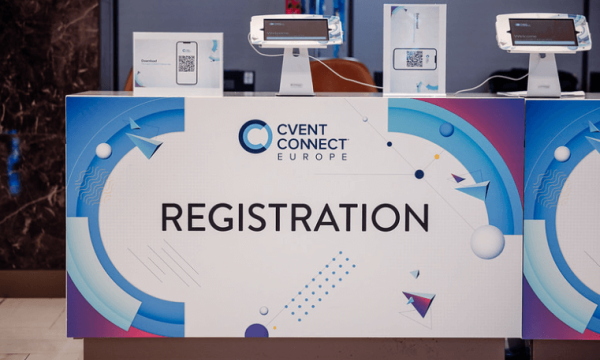Managing a great event starts with great planning. So, the first thing you should do is create an event planning timeline. It will help you ensure that suppliers are onboarded, venues are secured well in advance, and there’s a checklist in place so that your team and stakeholders are aware of what needs to happen and when.
If you’re not sure how to get started, read on to get a comprehensive event planning template.
What is an event planning timeline?
An event planning timeline is a chronological checklist of all the steps, stages and deadlines involved in creating your event. It should cover different phases, allowing you to keep track of your budget, coordinate multiple groups of people and monitor allocated tasks.
Why do I need a planning timeline?
Event planning can be daunting. With so many different timing aspects to juggle, it’s easy to get lost in the process. Having an actionable step-by-step timeline allows you to:
- Allocate tasks
- Set deadlines
- Manage budget
- Onboard suppliers
- Shortlist venues
- Work with production and technology companies
- Sign contracts
- Set up briefing calls
- Factor in an early-bird registration
- Source speakers
- Plan promotion
- Schedule reminders
Event planning timeline
Use our comprehensive timeline as your basis for what essential steps should be taken and when on your event planning journey.
10-12 months out
- Set your event date and understand the objectives.
- Set up a Meetings Request Form (MRF) so that you can collect the goals and requirements of the event from your key stakeholders, and have that information in one place.
- Agree on the event budget.
- Appoint your event technology provider and set up a briefing call to discuss your requirements.
- Send out RFPs to your shortlisted venues. Assess their sustainability credentials, production support, accessibility, connectivity, F&B options, room capacities and other factors.
- Shortlist other suppliers. Ask venues to provide a list of their recommended caterers, entertainers, accommodation partners and production agencies. Begin your enquiries by asking if suppliers have your event date available.
- Make a plan for marketing and event promotion. This may include setting up a content calendar for social media posts, appointing designers for invites, planning email campaigns and creating an event registration website.
6-9 months out
- Appoint your chosen venue and confirm your suppliers.
- Design your event layout. Pay particular attention to room capacities, accessibility requirements and how your attendees will move around your event. Use venue event diagramming tools to collaborate directly with your chosen venue.
- Issue a ‘Call for Papers’ or contact your shortlist of speakers to confirm their availability. Once confirmed, you’ll need their headshots and biographies to help build your programme and promote their involvement.
- Develop ideas for your mobile event app. What’s the app’s purpose? Will it facilitate networking, speaker Q&A, session feedback, delegate tracking or more?
- Launch your early bird registration and start promoting event attendance.
- Let attendees book their accommodation as soon as they’ve registered by integrating room block technology such as Cvent Passkey with your registration website.
3-6 months out
- Double down on your event marketing and step up the promotion of keynote speakers, attendee networking, social events and other reasons to attend your event.
- Sign any remaining supplier contracts and schedule kick-off calls to run through timings, requirements and next steps.
- Launch your event agenda and connect your attendees to all your planned content, networking opportunities and sponsors via a centralised platform such as Cvent’s Attendee Hub.
- Launch your event app. Promote the benefits of downloading it with a marketing campaign. Allow people to access it via your event website so that they can plan their schedule, organise meetings and get excited about your event.
- Create contingency plans. Begin planning for those circumstances beyond your control such as possible transport strikes, bad weather, poor turnout and health and safety concerns. Knowing what you’ll do if something goes wrong will help you deal with any eventuality.
- Send out pre-event surveys to get attendees’ feedback on what they want to see.
1-3 months out
- Create excitement by announcing any remaining speakers or additions to your agenda.
- Build a sense of urgency by reminding your target audience that this is their last chance to register.
- Plan your onsite technology. You’ll need check-in and badging technology such as Cvent OnArrival to minimise queues, avoid potential errors and do away with the time-consuming process of manually printing delegate badges. To allow your exhibitors and sponsors to qualify, rate, and take notes on each lead, give them a badge-scanning app such as Cvent LeadCapture.
- Confirm audio-visual equipment, such as the number and types of microphones for speakers, moderators and presenters.
Month of your event
- Do a venue walkthrough to discuss stage set-ups, production logistics and your event flow.
- Conduct briefing calls with your speakers and panellists.
- Continue your marketing efforts across multiple channels. Incentivise registrants to download your event app by announcing gamification elements with sponsored prizes.
One week out
- Hold team briefings and review roles and responsibilities so that everyone knows where they need to be and when on the day of your event.
- Confirm final attendee numbers with the venue and caterer.
- Confirm room block bookings with your partner hotels.
- Print any signage, marketing materials or place cards.
- Brief your photographers and videographers with shot lists and timings of where to be.
- Create cue sheets for your AV team.
- Send out push notifications via your event app to build anticipation and attendee excitement.
Day of event
- Arrive at your event venue early for setup.
- Hold briefings with suppliers for any last-minute changes to your agenda.
- Schedule speaker sound-checks.
- Review evacuation procedures, including fire exit locations.
- Review accessibility requirements, including ramps for stages, service dog facilities and anything else that has been requested by registered attendees.
- Schedule app push notifications such as post-session surveys and turn on attendee gamification options.
Post-event timeline
- Create a video archive libraryand offer attendees the chance to watch any sessions they may have missed or would like to see again via your content platform.
- Send out post-event surveys and encourage attendee feedback.
- Review your budget and calculate the final costs.
- Review how your venue and suppliers performed.
- Review activity, lead generation and analytics with your sponsors.
- Send out thank-yous to your speakers, panellists and moderators.
- Pay supplier invoices
- Set the date for next year (if your event is an annual one).
Tips for creating an event planning timeline
Every event is different, so your planning timeline may start further out or closer to the day of your event, depending on factors such as the number of expected attendees or how many days your event will run for.
When creating your planning timeline, consider these four tips:
1. Set anchor points
Anchor points are deadlines that are set in stone and can’t be moved. Examples include payment dates for your venue deposit and supplier invoices, catering numbers, room allocations and print deadlines. Adding these to your timeline will keep you on track and ensure nothing is forgotten.
2 Schedule catch-up calls
The sooner you’re made aware of a challenge, the easier it will be to solve. So add regular catch-up calls with your chosen venue, suppliers and technology partner throughout the different phases of your event planning roadmap. It will keep your event at the top of their ‘to-do’ lists.
3. Make your timeline visible
Planners are under constant pressure to create events at short notice, so make your planning timeline visible to stakeholders so that they can understand the steps required and see your progress. It will provide senior leadership with transparency on the planning process so that everyone is aware of what needs to happen and when.
4. Hold regular progress team meetings
Keep your events team focused on the planning roadmap by staging regular progress meetings. It will provide opportunities to discuss and solve any challenges, flag anything that needs urgent attention and keep the timeline moving along smoothly.
Event planning timeline FAQs
How far in advance should I start creating an event planning timeline?
The length of time required to properly plan, design, produce and execute your event will vary depending on the nature of the activity and its size. For a small event, your timeline may only need to be a couple of months. Whereas for larger conferences with thousands of delegates, your timeline could run for up to a year, with multiple planning phases and deadlines.
How can I effectively prioritise tasks within the event planning timeline?
Tasks should be carried out in chronological order. Allocate tasks to your team in the order you plan them, and hold regular review meetings to ensure everyone is on track.
How can I ensure that my event planning timeline is realistic and achievable?
Review the steps you’ve taken in the past to stage different types of events. Compare those steps to the advice in this event planning guide. By including everything that needs to be done and by giving yourself enough time to carry out and complete tasks, you will achieve your goals.
How often should I review and update my event planning timeline throughout the planning process?
Review and update your event planning timeline at regular intervals throughout the planning process. Schedule regular catch-up calls with suppliers, your chosen hotel and venue to make sure you’re on track or to be made aware of any delays to your timeline.
Ask your team for regular progress reports. If something is taking longer than it should to organise or if you need more budget for something, the earlier you know about it, the easier it will be to resolve.
How can I effectively communicate the event planning timeline with my team and stakeholders?
Host your event planning timeline on a shared platform such as your organisation’s intranet, Google Docs or Microsoft’s One Drive so everyone can see your progress. It will provide senior leadership with transparency on the planning process so that everyone is aware of what needs to happen and when.
What should I do if there are unexpected changes or delays in the event planning timeline?
Unexpected changes and delays happen all the time. Try to add ‘buffer periods’ to account for any issues. These are short periods when you can focus on resolving any unexpected challenges.
If your timeline won’t allow for buffer periods, delegate tasks so that you’re free to tackle any unexpected changes head-on.
Timing is everything
Having an event planning timeline helps you stay on track, allocate tasks, track your spending and complete all the stages of your event roadmap in chronological order. It also helps you share your process with stakeholders, review progress and avoid any delays or challenges from going unnoticed.
With so many steps involved in planning an event, a timeline is a vital part of your toolkit.
Why not also use our actionable event planning checklist to stay organised and efficient as you work through each phase of your event planning timeline?




